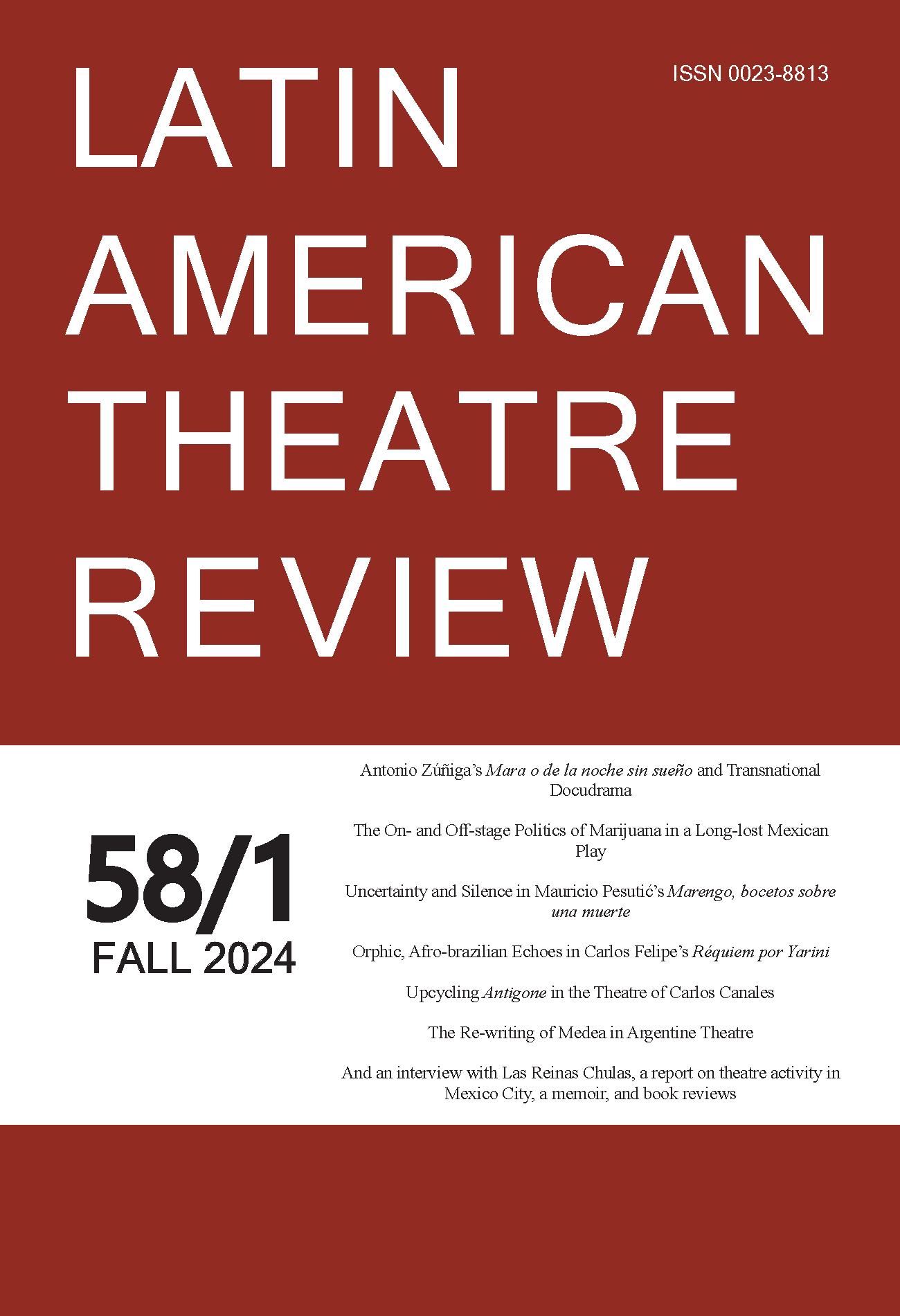Abstract
.Described by the web site “InSight Crime as “perhaps the most notorious street gang in the Western Hemisphere,” most of us have heard about the Mara Salvatrucha or MS-13. The Chihuahense Antonio Zúñiga (1965) has taken on the subject of the gang in his play, “Mara, o de la noche sin sueño,”(2010), what I would call a postmodern, transnational docudrama. Zúñiga uses an anecdote involving gang members to explore issues of hybrid identities, treachery, and vengeance with a transcultural perspective. He dramatizes an actual incident involving Honduran-born Brenda Paz and her lover, Dennis Rivera, who left the uncertainties of their country only to wind up in even more ferocious battles as they became members of the notorious Mara Salvatrucha gang in the US. The historical record on which the play is based is filled with dramatic events, such as Dennis’s rise in power to become leader of the MS-13 clique in the US, Brenda’s increasing forceful role in gang activities, her betrayal by starting an affair with Joaquin Díaz, the leader of a rival faction (the Mexican-led MS 18), and her final treachery by becoming an informant for the FBI. For this last disloyalty, Brenda is killed by MS 13 gang members, having barely reached the age of 17, in 2003, Zuñiga chose to dramatize the story of Brenda Paz not because of its sensationalist nature, but because Brenda’s story involves such eternal themes as love, betrayal, and murder.
All items © The Center of Latin American Studies and Caribbean Studies, The University of Kansas, Lawrence, Kansas 66045, U.S.A. Authors: If you prefer to remove your text(s) from this database please contact Dr. Stuart A. Day (day@ku.edu)
